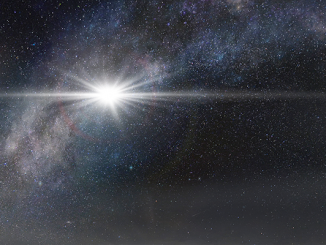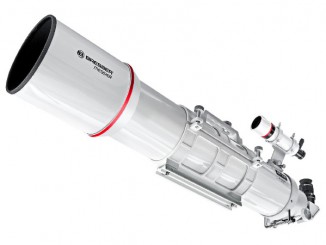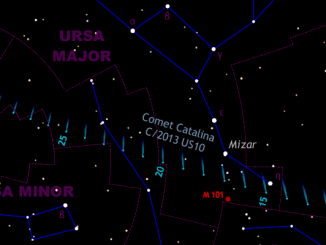
Archive



Possible ice volcano on Pluto has the ‘Wright stuff’
Scientists with NASA’s New Horizons mission have assembled this highest-resolution colour view of Wright Mons, one of two potential cryovolcanoes spotted on the surface of Pluto by the New Horizons spacecraft in July 2015. The feature is 90 miles across and 2.5 miles high, which would make the largest volcano in the outer solar system.


Possibly the most powerful supernova ever seen
Records are made to be broken, as the expression goes, but rarely are records left so thoroughly in the dust. Stunned astronomers have witnessed a cosmic explosion about 200 times more powerful than a typical supernova — events which already rank amongst the mightiest outbursts in the universe — and more than twice as luminous as the previous record-holding supernova.

Bresser Messier AR-152L/1200 refractor OTA
Reviewer Steve Ringwood takes a look through the Bresser Messier AR-152L/1200 — a classic achromatic doublet refractor of 152mm (six-inch) aperture and f/8 focal ratio. Available as an optical tube only with mounting rings, dovetail, carry handle, 8×50 finder, 26mm eyepiece, diagonal and T-adapter, the instrument employs Bresser’s bespoke Hex Focus system.

First light for future black hole probe
Zooming in on black holes is the main mission for the newly installed GRAVITY instrument at ESO’s Very Large Telescope in Chile. During its first observations, GRAVITY successfully combined starlight using all four 1.8-metre Auxiliary Telescopes. The first observations using GRAVITY with the four 8-metre VLT Unit Telescopes are planned for later in 2016.

LOFAR radio telescope network to extend into Ireland
The world’s biggest connected radio telescope is about to become even bigger! A LOFAR (Low Frequency Array) station will be constructed this year on the grounds of Birr Castle, located centrally in Ireland. This is not only great news for Irish astrophysics, but also for the International LOFAR Telescope (ILT).

New details on Ceres seen in Dawn images
Features on dwarf planet Ceres that piqued the interest of scientists throughout 2015 stand out in exquisite detail in the latest images from NASA’s Dawn spacecraft, which recently reached its lowest-ever altitude at Ceres. Dawn took these images near its current altitude of 240 miles (385 kilometers) between 19 and 23 December 2015.

See Comet Catalina pass overhead from UK when closest to Earth
Having brushed by bright star Arcturus on 1 January, Comet Catalina (C/2013 US10) continues its trek through the constellations of the far north. Now a circumpolar object for the British Isles, in the early hours of 17 January it lies between famous double star Mizar (ζ Ursae Majoris) and the Pinwheel Galaxy (M101), virtually overhead in the UK.
